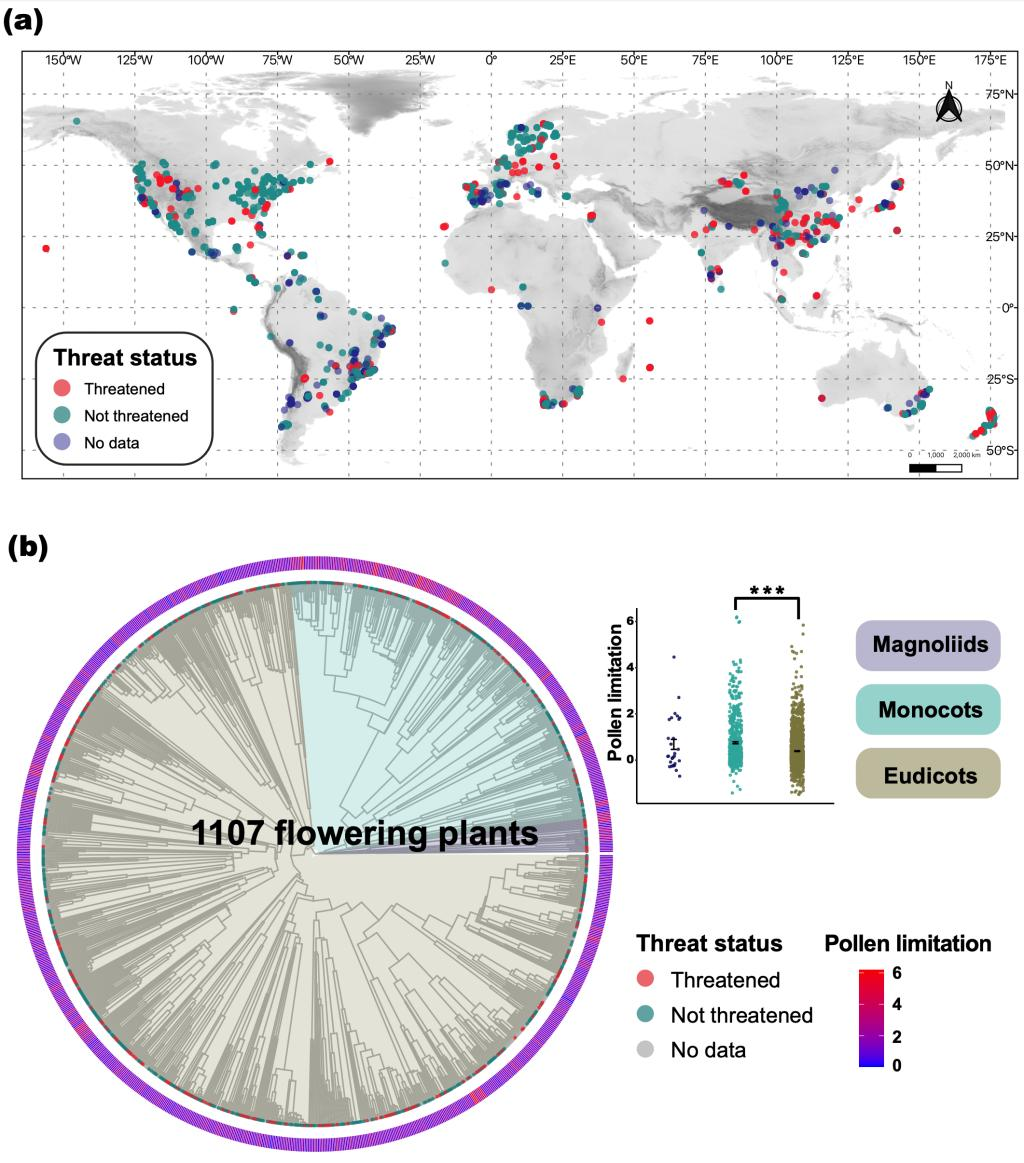An international collaborative team led by Professor Li Junmin from Taizhou University published recently a research paper titled “Global Meta-analysis Shows that Threatened Flowering Plants Have Higher Pollination Deficits” in the authoritative journal Nature Communications (a Nature journal, CAS Q1 TOP, 5-Year IF: 17.2). Associate Professor Lin Hanyang from the team is the first author, Professor Li Junmin is the sole corresponding author, and TU is the first affiliation.
In nature, the vast majority of flowering plants rely on animals like insects to complete the pollination process. However, due to factors such as pollinator decline, habitat fragmentation, and intensified land use caused by human activities, many plants face pollen limitation—where the actual amount of pollen received is insufficient to achieve optimal seed set. This limitation can affect plant population regeneration, accelerate the extinction process of endangered species, reshape the reproductive strategies of invasive plants and exacerbate their invasiveness.
Since 2015, the international collaborative team involving Professor Li Junmin has continuously conducted global-scale research on the mechanisms of pollen limitation and its ecological impacts, publishing related papers in top international journals like Nature Communications, Science Advances, and New Phytologist. Their findings clarify the prevalence and driving mechanisms of pollen limitation against the backdrop of global change, including how invasive plants avoid pollen limitation, how land-use change exacerbates pollen limitation, and how pollinator decline threatens plant reproduction.
This newly published paper is based on a meta-analysis of data from 2633 supplemental pollination experiments involving 1107 species of flowering plants worldwide, combined with the plants’ threat status and information on 13 traits related to reproduction and life history. The study is the first to quantify the association between threatened status and pollen limitation, confirming that threatened plants experience, on average, 26% higher pollen limitation than non-threatened plants. Furthermore, this difference in pollen limitation is jointly influenced by plant traits and geographic region, particularly in pollinator-dependent plants and those in Asia and temperate zones.
Through structural equation modeling, the study further revealed the causal relationships between plant traits, geographic distribution, threatened status, and pollen limitation. Pollinator-dependent woody plants with specialized floral structures are more susceptible to pollen limitation; tropical plants are more likely to experience pollination deficits; and being threatened itself can directly exacerbate pollen limitation. These results provide a new framework for understanding plant extinction risk.
The study calls for future global assessment systems for threatened plants to place greater emphasis on recording and quantifying key traits like pollinator dependence, which will help more accurately predict extinction risks and formulate corresponding conservation measures.

This paper is a comprehensive research achievement based on in-depth collaboration among scientists worldwide and has received funding from sources such as the German Centre for Integrative Biodiversity Research (iDiv). Collaborators from 18 global research institutions, including Professor Tiffany M. Knight, contributed guidance to this research. The first author, Dr. Lin Hanyang, joined TU in 2022 and primarily focuses on plant systematics, evolution, and molecular ecology.
The publication of this paper demonstrates the solid progress TU has made in consolidating its research foundation and enhancing talent recruitment and cultivation during the critical phase of “upgrading the university, applying for doctoral programs, and striving for first-class status.” It also injects significant momentum into the university’s efforts to accelerate the construction of a regionally first-class application-oriented university.
Article link: https://www.nature.com/articles/s41467-025-61032-5